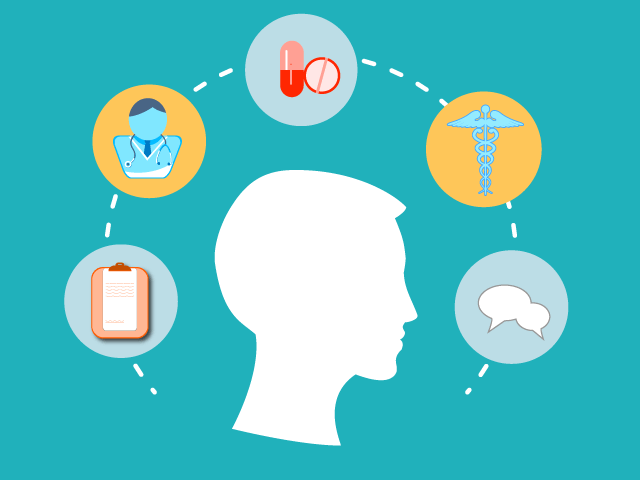The Role of Life Insurance and Your Family's Future
Planning for the future means more than just thinking about retirement savings or where you’d like to live in your golden years. One of the most impactful and thoughtful things you can do for the people you love is to prepare for the moment you’re no longer with them. That’s where life insurance steps in, not just as a safety net, but as a powerful tool in estate planning and ensuring your family is protected financially.

In this article, we’ll explore how life insurance plays a vital role in securing your family’s future. We’ll focus on two key areas: estate planning and covering final expenses. Whether you’re just beginning to think about these issues or you’re revisiting an older plan, understanding the value of life insurance is an essential step in responsible financial planning.
Why Thinking Ahead Matters
It’s natural to avoid conversations about what happens after death, but avoiding the topic can often lead to confusion, unnecessary costs, and financial hardship for surviving family members. When someone passes away without clear plans in place, loved ones are left to sort out arrangements, debts, and responsibilities—often during a time of grief and stress.
Having a life insurance policy in place can remove much of that burden. It provides clear instructions, available funds, and most importantly, peace of mind. It’s not just about what you leave behind—it’s about how your family continues moving forward.
Life Insurance as a Foundation for Estate Planning
Estate planning is about more than just writing a will. It’s a comprehensive approach to organizing your assets, protecting your family, and ensuring that your wishes are carried out. Life insurance is a central component in many estate plans because it creates liquid assets—money that becomes available quickly when it’s needed most.
Life Insurance Creates Immediate Support
After someone passes, many assets, like property, investments, or retirement accounts—may be tied up in probate. This legal process can take months to settle, and it often requires court involvement. During that time, your loved ones might need access to cash for basic needs or to pay for arrangements. Life insurance bypasses probate in most cases, delivering funds directly to the named beneficiary.
This immediate support can help cover mortgage payments, keep bills current, or allow a spouse to take time away from work. It ensures your family has the breathing room to grieve without being pressured by financial stress.
Using Life Insurance to Cover Debts and Taxes
Life insurance is also helpful when settling debts or handling estate taxes. If you have a mortgage, credit cards, or personal loans, those obligations might not disappear when you do. In many cases, unpaid debts become part of your estate and must be addressed before any assets can be passed on.
Having life insurance in place can ensure that your family isn’t forced to sell off assets to settle those obligations. For individuals with higher-value estates, it can even be used to pay estate taxes, helping to preserve family property or generational wealth.
Supporting Loved Ones Through Final Expenses
One of the most common and practical uses for life insurance is to cover final expenses. Funeral costs can range anywhere from $7,000 to $15,000, depending on the type of service, burial, or cremation selected. That doesn’t include travel costs, obituary notices, flowers, or other arrangements that quickly add up.
Without a plan, these costs often fall to family members—many of whom are unprepared. In some cases, families resort to taking out loans, borrowing from relatives, or using credit cards to give their loved one a dignified farewell.
With a life insurance policy designed to cover final expenses, everything from the casket to the headstone can be handled without added emotional or financial strain. These policies often range from $10,000 to $50,000 and are easy to qualify for, making them an excellent option for seniors.
Protecting Your Spouse and Children
While final expenses are a key reason many people buy life insurance, there’s also a broader impact on surviving spouses and children. If your income helps support your household—whether directly or indirectly, its absence can leave a noticeable gap.
Even if you're no longer working, the role you play in managing the home, helping raise grandchildren, or providing supplemental income matters. Life insurance ensures that those who depend on you aren’t left in a difficult position.
For couples, a policy can help the surviving partner maintain their standard of living. For adult children, it may provide enough assistance to handle outstanding medical bills, caregiving costs, or legal paperwork. For younger children, it could help support future educational plans or offset the costs of raising a family alone.
A Tool for Leaving a Legacy
Not all life insurance policies are meant to cover expenses. Some are designed to create a meaningful legacy. If you wish to leave a financial gift for a grandchild, support a place of worship, or fund a scholarship in your name, life insurance makes that possible.
Permanent policies—like whole life or universal life, are especially helpful for these purposes. They offer predictable coverage and, in some cases, the ability to grow a small savings portion inside the policy. With careful planning, these policies can serve both your family and the causes you care about.
Choosing the Right Type of Life Insurance
There are many types of life insurance, but for estate planning and final expenses, a few stand out as particularly useful:
Whole life insurance offers lifelong coverage with fixed premiums. It builds cash value over time and is often used for long-term planning.
Final expense insurance, a type of whole life policy, provides smaller amounts of coverage but is easy to apply for and designed specifically to pay for burial or cremation costs.
Universal life insurance offers flexibility in both premiums and coverage amounts. It can be customized to fit changing needs over time.
Term life insurance, while useful for income replacement, typically isn’t used for final expense planning because it expires after a certain number of years.
The right choice depends on your age, health, goals, and financial situation. A licensed agent can help you compare options and determine what makes the most sense for your family.
How to Start the Conversation
Talking about life insurance can feel uncomfortable at first, but it’s one of the most compassionate conversations you can have with your family. Sit down with your spouse or children and explain what your wishes are, what policies you already have in place, and who they should contact when the time comes.
Keep policy documents in a safe, easy-to-find location, and be sure someone you trust knows where they are. The goal is to eliminate uncertainty, not create more of it.
Final Thoughts
Planning for the future takes courage, but life insurance makes it easier. It’s not just about money, it’s about taking responsibility and showing love in one of the most powerful ways possible. From paying for a funeral to preserving your estate, a well-chosen policy ensures your family can focus on healing rather than scrambling to find answers.
Whether you’re starting from scratch or updating an old plan, now is the time to take action. Life insurance may not change the loss itself, but it can change everything that comes after, for the better.



